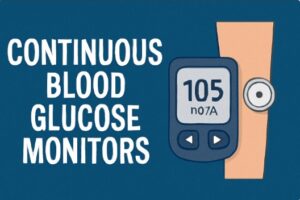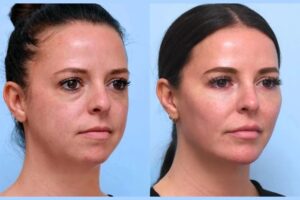
Seasonal Affective Disorder (SAD) is a type of depression that occurs during specific seasons, most commonly in winter when daylight hours are shorter. While traditional SAD treatment Dubai options like light therapy and counseling are effective, mindfulness and meditation have emerged as powerful complementary approaches. These practices help individuals manage symptoms by fostering mental clarity, emotional balance, and resilience.
Understanding Seasonal Affective Disorder
Seasonal Affective Disorder is more than just the “winter blues.” It is a clinically recognized form of depression that follows a seasonal pattern. Symptoms often include low energy, mood swings, difficulty concentrating, and changes in sleep or appetite. The lack of sunlight during colder months can disrupt the body’s internal clock and reduce serotonin levels, contributing to these symptoms.
How Mindfulness and Meditation Help in SAD Treatment
Mindfulness and meditation encourage present-moment awareness, helping individuals break free from negative thought patterns associated with SAD. These practices promote relaxation, reduce stress, and improve emotional regulation—key factors in managing seasonal depression. Research suggests that regular meditation can enhance mood stability and increase resilience against seasonal mood fluctuations.
The Role of Mindfulness in SAD Treatment
Mindfulness involves paying attention to the present moment without judgment. For those experiencing SAD, mindfulness can help by:
-
Reducing Rumination – Breaking the cycle of repetitive negative thoughts.
-
Enhancing Emotional Awareness – Recognizing and accepting emotions without being overwhelmed.
-
Improving Sleep Quality – Calming the mind to promote restful sleep, which is often disrupted in SAD.
Practicing mindfulness doesn’t require extensive training. Simple techniques like mindful breathing or body scans can be integrated into daily routines to alleviate symptoms of seasonal depression.
Meditation Techniques for Seasonal Affective Disorder
Different meditation styles can be beneficial for SAD treatment. Some effective approaches include:
Guided Meditation – Listening to a recorded meditation can help focus the mind and reduce stress.
Loving-Kindness Meditation – Cultivating compassion for oneself and others can counteract feelings of isolation.
Breath Awareness Meditation – Focusing on the breath helps ground the mind and reduce anxiety.
Consistency is key. Even short daily sessions can lead to noticeable improvements in mood and energy levels over time.
How Mindfulness and Meditation Help in SAD Treatment
Mindfulness and meditation encourage present-moment awareness, helping individuals break free from negative thought patterns associated with SAD. These practices promote relaxation, reduce stress, and improve emotional regulation—key factors in managing seasonal depression. Research suggests that regular meditation can enhance mood stability and increase resilience against seasonal mood fluctuations.
Mindfulness involves paying attention to the present moment without judgment. For those experiencing SAD, mindfulness can help by:
-
Reducing Rumination – Breaking the cycle of repetitive negative thoughts.
-
Enhancing Emotional Awareness – Recognizing and accepting emotions without being overwhelmed.
-
Improving Sleep Quality – Calming the mind to promote restful sleep, which is often disrupted in SAD.
Practicing mindfulness doesn’t require extensive training. Simple techniques like mindful breathing or body scans can be integrated into daily routines to alleviate symptoms of seasonal depression.
Meditation Techniques for Seasonal Affective Disorder
Different meditation styles can be beneficial for SAD treatment. Some effective approaches include:
Guided Meditation – Listening to a recorded meditation can help focus the mind and reduce stress.
Loving-Kindness Meditation – Cultivating compassion for oneself and others can counteract feelings of isolation.
Breath Awareness Meditation – Focusing on the breath helps ground the mind and reduce anxiety.
Consistency is key. Even short daily sessions can lead to noticeable improvements in mood and energy levels over time.
Combining Mindfulness with Other SAD Treatment Strategies
While mindfulness and meditation are powerful tools, they work best when combined with other healthy habits. Exposure to natural light, regular physical activity, and maintaining social connections can enhance the effectiveness of these practices. A holistic approach ensures that individuals receive comprehensive support for managing seasonal depression.
Scientific Support for Meditation in SAD Treatment
Studies have shown that mindfulness-based interventions can reduce depressive symptoms and improve emotional well-being. Meditation has been found to increase gray matter in brain regions associated with mood regulation, suggesting long-term benefits for those with SAD. These findings highlight meditation’s potential as a sustainable and accessible SAD treatment option.
Practical Tips for Incorporating Mindfulness into Daily Life
Starting a mindfulness practice doesn’t have to be complicated. Here are some simple ways to begin:
-
Morning Mindfulness Routine – Spend a few minutes focusing on breathing before starting the day.
-
Mindful Walking – Pay attention to each step and the surrounding environment during walks.
-
Gratitude Journaling – Reflecting on positive aspects of life can shift focus away from negative thoughts.
Small, consistent efforts can make a significant difference in managing seasonal depression.
Conclusion
Mindfulness and meditation offer a natural and effective way to support SAD treatment in Dubai. By fostering self-awareness and emotional balance, these practices help individuals navigate seasonal mood changes with greater ease. Whether used alone or alongside other strategies, mindfulness techniques provide valuable tools for improving mental well-being during challenging seasons. Embracing these methods can lead to a brighter, more balanced outlook—even on the darkest winter days.



